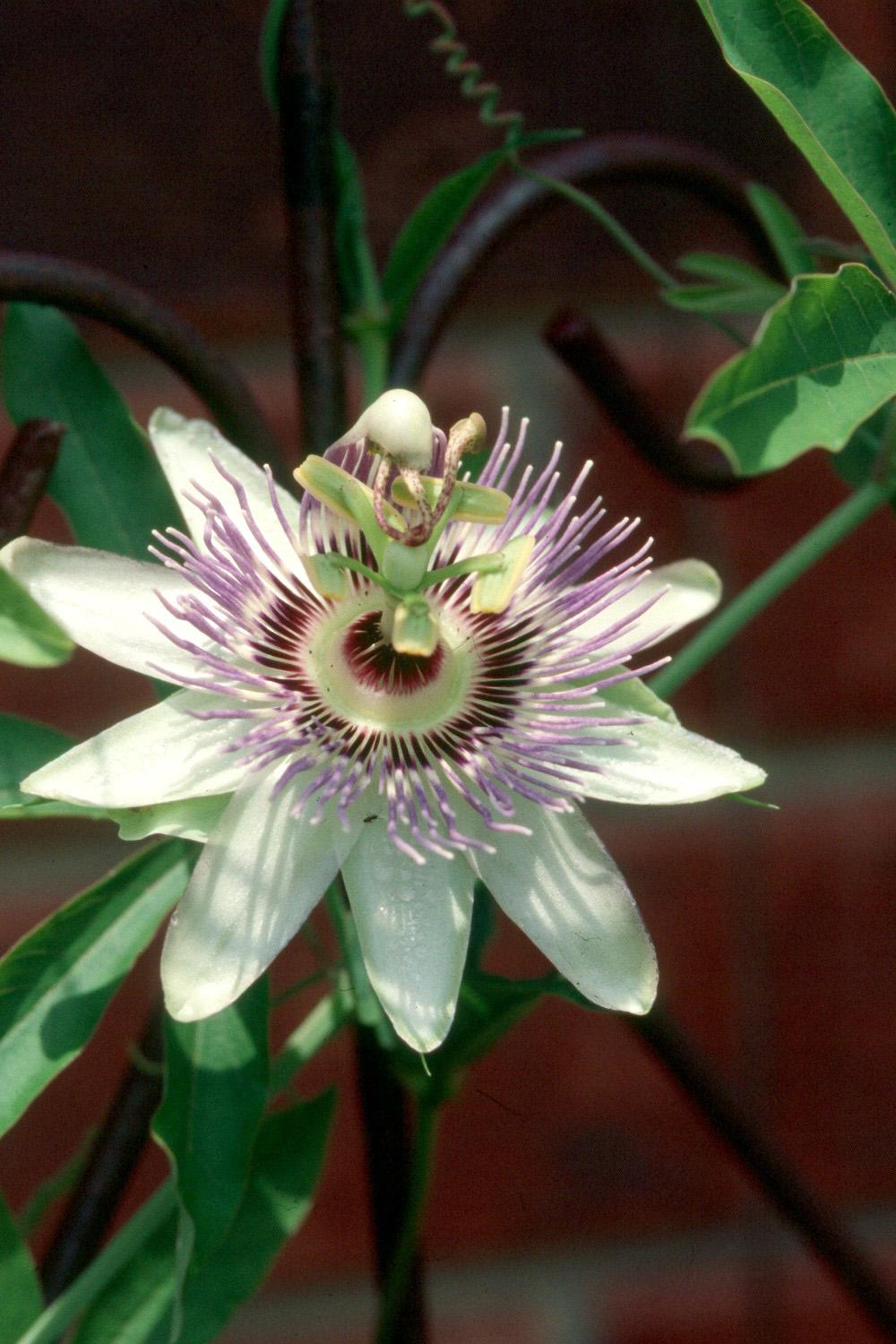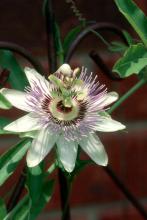Information Possibly Outdated
The information presented on this page was originally released on June 4, 2001. It may not be outdated, but please search our site for more current information. If you plan to quote or reference this information in a publication, please check with the Extension specialist or author before proceeding.
Passionflower vines yield exotic blooms
By Norman Winter
MSU Horticulturist
Central Mississippi Research & Extension Center
Gardeners everywhere seem to be searching out vines for that special fence, trellis or arbor. The passionflower, one of my favorites, is not only one of the most beautiful and exotic blooms in the world, but the fruit also yields one of the favorite flavors in tropical fruit juices.
The tropical fruit from the Passiflora edulis presents a challenge for Mississippians to grow in our hardiness zones. Many other passion vines produce edible fruit, including our native Passiflora incarnata.
The native passion vine is known by the common names of apricot vine, maypop and wild passionflower. It is among the most cold hardy and is native all the way to Illinois. It is a large, robust vine with finely-toothed, three-lobed leaves that die down to the root in the winter, no doubt imparting winter hardiness.
This is a plant known to sucker and can cover a large area fairly quickly. On the other hand, a little maintenance yields a nice vine with some of the most exotic flowers in the world. Many gardeners do not know that our native passion vine has been used in breeding.
Incense is one of the finest vines anywhere and is a result of hybridizing. The vine has large, five-fingered leaves, exotic-looking 5-inch wide royal purple flowers with lacy corolla overlaying the petals and fragrant flowers. Incense has been known to survive in zone 5 with protection.
Red passionflowers, Passiflora coccinea and Passiflora vitifolia, have started showing up at garden centers the past few years and are certainly among the most beautiful. These are not nearly as cold hardy as the others and will need good protection and mulch to entice them to return in the southern part of the state.
It is nice to be able to buy vigorous vines like these that will bloom in the season of purchase. These can be dug up to overwinter, grown in a container or propagated by cutting if desired.
Passion vines require good drainage and plenty of sunlight to be prolific bloomers. Provide a good support structure and keep well mulched. A light application of fertilizer in late spring and mid-summer keeps the foliage looking its best.
Depending on your disposition, there might be one drawback to the passion vine. The native Gulf Coast Fritillary butterfly with its beautiful orange wings likes the passion vine as a host plant. In other words, their larvae will munch on a few leaves and no doubt you will be rewarded with more butterflies.
In the landscape, it is hard to beat a well-managed Incense passion vine grown in combination with the yellow shrimp plant, allamandas or lantanas like New Gold, Sonset and Sonrise.
The name itself is one other note of interest on the passionflower. The flowers of passion vines are associated with the crucifixion of Jesus Christ, especially in Latin countries. The five sepals and five petals are said to represent the apostles minus Judas, who betrayed Jesus, and Peter, who denied Jesus.
The five stamens represent the five wounds Jesus received (one each in his hands and feet and the piercing of his side by a spear), the stigmas represent the three nails used to nail Jesus to the cross and the corona of numerous filaments is said to represent the crown of thorns. Certain tropical species possess foliage marked by silvery-green rounded variegations, and these are said to represent the coins of silver for which Judas betrayed Jesus.



